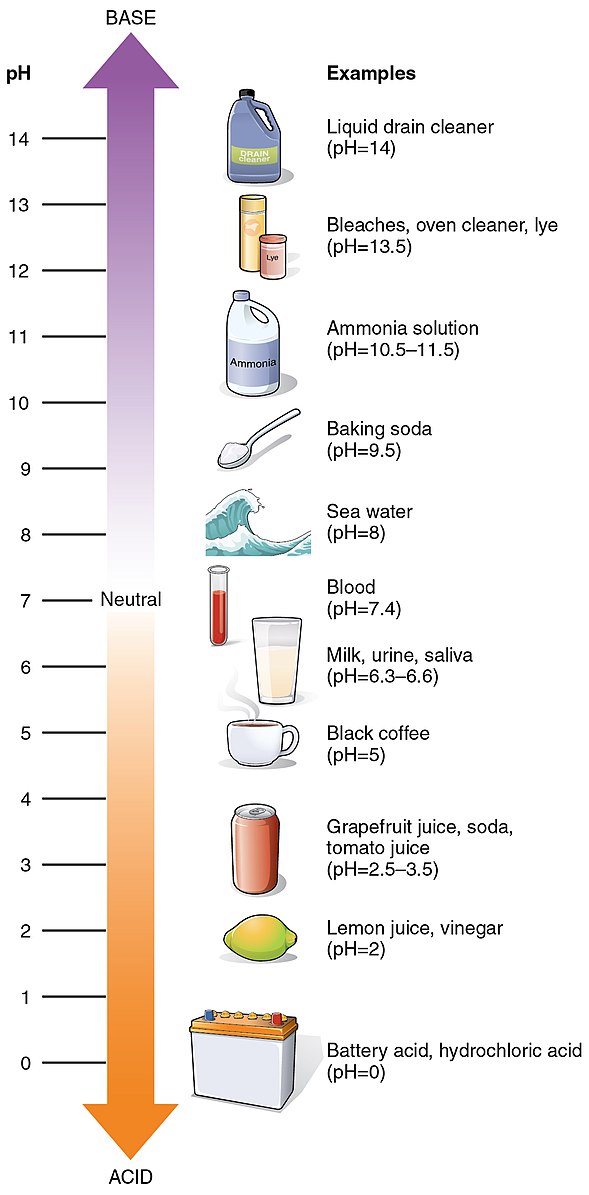Phosphoric acid, H3PO4, is a strong triprotic acid with three pKa values, which defines three dissociation reactions. The pH of a phosphoric acid solution depends on the concentration of the acid and the proportions of the different phosphate species present. Phosphoric acid is used in various applications, including as a corrosion inhibitor in potable water, a food additive, a cleaning agent, and an etching solution in dentistry and orthodontics.
Understanding the Dissociation of Phosphoric Acid
Phosphoric acid has three pKa values:
| pKa Value | Dissociation Reaction |
|---|---|
| pKa1 = 2.14 | H3PO4 ⇌ H+ + H2PO4- |
| pKa2 = 7.207 | H2PO4- ⇌ H+ + HPO42- |
| pKa3 = 12.346 | HPO42- ⇌ H+ + PO43- |
These pKa values define the three dissociation reactions of phosphoric acid. The pH of a phosphoric acid solution depends on the concentration of the acid and the proportions of the different phosphate species present.
Concentration and pH Relationship
 Image source: OpenStax College
Image source: OpenStax College
- For large acid concentrations, the solution is mainly dominated by the undissociated H3PO4.
- At 10-2 M, the pH is close to pKa1 = 2.14, giving an equimolar mixture of H3PO4 and H2PO4-.
- Below 10-3 M, the solution is mainly composed of H2PO4-, while HPO42- becomes non-negligible for very dilute solutions.
- The orthophosphate ion, PO43-, is always negligible.
Phosphoric Acid Production Processes
Phosphoric acid is produced by two routes:
- Thermal Process:
- Phosphorus is burned to produce phosphorus pentoxide (P2O5).
- The P2O5 is then dissolved in water to produce a very pure phosphoric acid.
-
This process removes most impurities present in the rock, resulting in a food-grade, thermal phosphoric acid.
-
Wet Process:
- Sulfuric acid is added to calcium phosphate rock.
- The simplified reaction is: Ca3(PO4)2 + 3H2SO4 + 6H2O ⇌ 2H3PO4 + 3CaSO4.2H2O.
- Wet-process acid can be purified by removing fluorine to produce animal-grade phosphoric acid, or by solvent extraction and arsenic removal to produce food-grade phosphoric acid.
Applications and Safety Considerations
Phosphoric acid is used in various applications, including:
- Corrosion inhibitor in potable water
- Food additive
- Cleaning agent
- Etching solution in dentistry and orthodontics
Phosphoric acid is a hazardous chemical that must be handled with necessary safety precautions to meet building and fire code requirements in the United States. Refer to safety data sheets (SDSs) for safe handling and storage information.
References:
– Phosphoric Acid Solution
– Phosphoric Acid Properties
– AWWA Standard for Phosphoric Acid
– Phosphoric Acid Encyclopedia
– Phosphoric Acid Product Information
